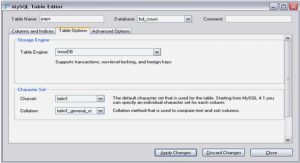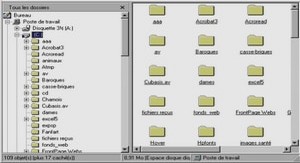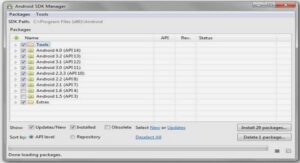Chapter 1. Concepts
What Is LUA?
Choosing Which Interface to Use
LUs and Sessions Configuration
LUA Verbs
RUI Verb Summary
SLI Verb Summary
Asynchronous Verb Completion
A Sample LUA Communication Sequence
LUA Compatibility
Chapter 2. Designing and Writing LUA Applications
LUA Entry Points for AIX or Linux Applications
RUI Function Call
SLI Function Call
Supplied Parameters
Returned Values
Usage
Callback Routine for Asynchronous Verb Completion
LUA Entry Points for Windows Applications
RUI
WinRUIStartup
WinRUI WinRUIGetLastInitStatus WinRUICleanup
GetLuaReturnCode
SLI
WinSLIStartup
WinSLI
WinSLICleanup
Issuing an LUA Verb
SNA Information
BIND Checking: RUI
BIND Checking: SLI
Negative Responses and SNA Sense Codes
Pacing
Segmentation
Modification of Nonstandard Host Response/Request Header (RH) Bits
Courtesy Acknowledgments
Purging Data to End of Chain
SNA Information for RUI Primary
Responsibilities of the Primary RUI application
Pacing Segmentation
Restrictions
Courtesy Acknowledgments
Purging Data to End of Chain
Configuration Information
Data Link Control (DLC), Port, and Link Station (LS)
LU LU Pool (Optional)
AIX or Linux Considerations
LUA Header File
Multiple Processes and Multiple Sessions
Compiling and Linking the LUA Application
Windows Considerations .
Multiple Sessions and Multiple Tasks
Compiling and Linking LUA Programs
Terminating Applications
Writing Portable Applications
Chapter 3. LUA VCB Structure
LUA Verb Control Block (VCB) Format
LUA_VERB_RECORD Data Structure
Common Data Structure
Specific Data Structure
Chapter 4. RUI Verbs
RUI_BID
Supplied Parameters
Returned Parameters
Interaction with Other Verbs
Usage and Restrictions
RUI_INIT
Supplied Parameters
Returned Parameters
Interaction with Other Verbs
Usage and Restrictions
RUI_INIT_PRIMARY
Supplied Parameters
Returned Parameters
Interaction with Other Verbs
Usage and Restrictions
RUI_PURGE
Supplied Parameters
Returned Parameters Interaction with Other Verbs
RUI_READ
Supplied Parameters
Returned Parameters
Interaction with Other Verbs
Usage and Restrictions RUI_REINIT
Supplied Parameters
Returned Parameters
Interaction with Other Verbs .
Usage and Restrictions
RUI_TERM Supplied Parameters
Returned Parameters
Interaction with Other Verbs
RUI_WRITE
Supplied Parameters
Returned Parameters
Interaction with Other Verbs
Usage and Restrictions
Chapter 5. SLI Verbs
SLI_BID Supplied Parameters
Returned Parameters
Interaction with Other Verbs
Usage and Restrictions
SLI_CLOSE Supplied Parameters Returned Parameters
Interaction with Other Verbs
Usage and Restrictions
SLI_OPEN
Supplied Parameters
Return Value from SLI Entry Point
Returned Parameters
Interaction with Other Verbs
Usage and Restrictions
SLI_PURGE
Supplied Parameters
Returned Parameters
Interaction with Other Verbs
SLI_RECEIVE Supplied Parameters
Returned Parameters
Interaction with Other Verbs
Usage and Restrictions
SLI_SEND
Supplied Parameters
Returned Parameters
Interaction with Other
Verbs Usage and Restrictions .
SLI_BIND_ROUTINE
Supplied Parameters
Returned Parameters
Interaction with Other Verbs
Usage and Restrictions
SLI_SDT_ROUTINE
Supplied Parameters
Returned Parameters
Interaction with Other Verbs
Usage and Restrictions
SLI_STSN_ROUTINE
Supplied Parameters
Returned Parameters
Interaction with Other Verbs
Usage and Restrictions
Chapter 6. Sample LUA Application
Processing Overview
Testing the Application
Host Requirements
Configuration for the Sample Application
Compiling and Linking the Sample Application
Running the Sample Application
Appendix A. Return Code Values
Primary Return Codes
Secondary Return Codes
Appendix B. Accessibility .
Using assistive technologies
Keyboard navigation of the user interface
z/OS information . Appendix C. Notices
Trademarks
Bibliography CS/AIX Version 6.3Publications
IBM Communications Server for AIX Version 4 Release 2 Publications
IBM Redbooks Block Multiplexer and S/390 ESCON Channel PCI Adapter publications
AnyNet/2 Sockets and SNA publications
AIX Operating System Publications
Systems Network Architecture (SNA) Publications
Host Configuration Publications
z/OS Communications Server Publications
Multiprotocol Transport Networking publications
TCP/IP Publications
X.25 Publications
APPC Publications
Programming Publications
Other IBM Networking Publications
Index
Communicating Your Comments to IBM
Chapter 1. Concepts
This chapter introduces the fundamental concepts of LUA—the Conventional LU (Logical Unit) Application Programming Interface (API).
The topics covered in this chapter are as follows:
v What is LUA?
v Choosing which interface to use (RUI or SLI)
v LUs and sessions
v LUA verbs
v A sample LUA communication sequence
v LUA compatibility
What Is LUA?
LUA (the Conventional LU Application Programming Interface) is an API that enables you to write CS/AIX applications to communicate with host applications.
The LUA interface is provided at the request/response unit (RU) level, allowing the programmer control over the Systems Network Architecture (SNA) messages sent between CS/AIX and the host. It can be used to communicate with any of the LU types 0, 1, 2, or 3 at the host; it is up to the application to send the appropriate SNA messages as required by the host application.
For example, you can use LUA to write a 3270 emulation program that communicates with a host 3270 application; a simple version of this is included as a sample LUA application with CS/AIX, and described in Chapter 6, “Sample LUA Application,” on page 147.
Choosing Which Interface to Use
LUA includes two different programming interfaces at different level v The Request Unit Interface (RUI) is provided at the request/response unit (RU) level, allowing the programmer control over the Systems Network Architecture (SNA) messages sent between CS/AIX and the host. It is up to the application to build and send the appropriate SNA messages as required by the host application.
The RUI interface supports SNA Function Management Profiles 2, 3, 4, 7, and 18, and SNA Transmission Services Profiles 2, 3, 4, and 7.
v The Session-Level Interface (SLI) is a higher-level interface, allowing the programmer to work at a logical message level rather than being concerned with the detail of individual RUs. For example:
– The session can be established and terminated with a single SLI verb (rather than with a sequence of RUI verbs corresponding to the individual RUs involved in session startup and termination).
– The SLI library controls chaining when the application needs to send or receive data that is longer than the maximum RU length specified in the BIND.
– For most SNA commands sent to the host, the SLI library can build the appropriate RU at the request of the application. The SLI interface supports SNA Function Management Profiles 3 and 4, and SNA Transmission Services Profiles 3 and 4..
Configuration
Each LU used by an LUA application must be configured using the Motif administration program, the command-line administration program, or the node operator facility (NOF) API (for more information, refer to the Communications Server for AIX Administration Guide or the Communications Server for AIX NOF Programmer’s Guide). In addition, the CS/AIX configuration may include LU pools.
A pool is a group of LUs with similar characteristics, such that an application can use any free LU from the group. This can be used to allocate LUs on a first-come, first-served basis when there are more applications than LUs available, or to provide a choice of LUs on different connections.
LUA programmer’s guide (1,70 MO) (Cours PDF)



